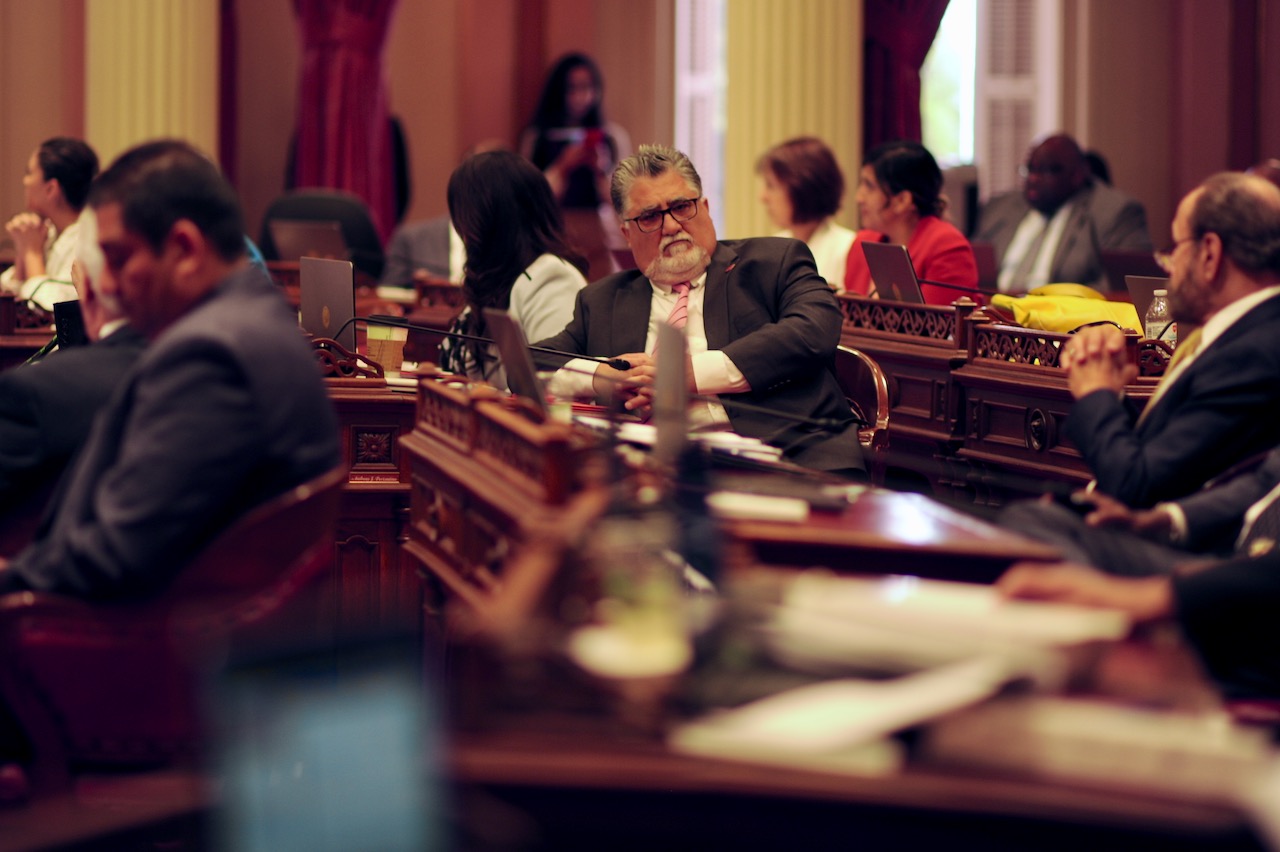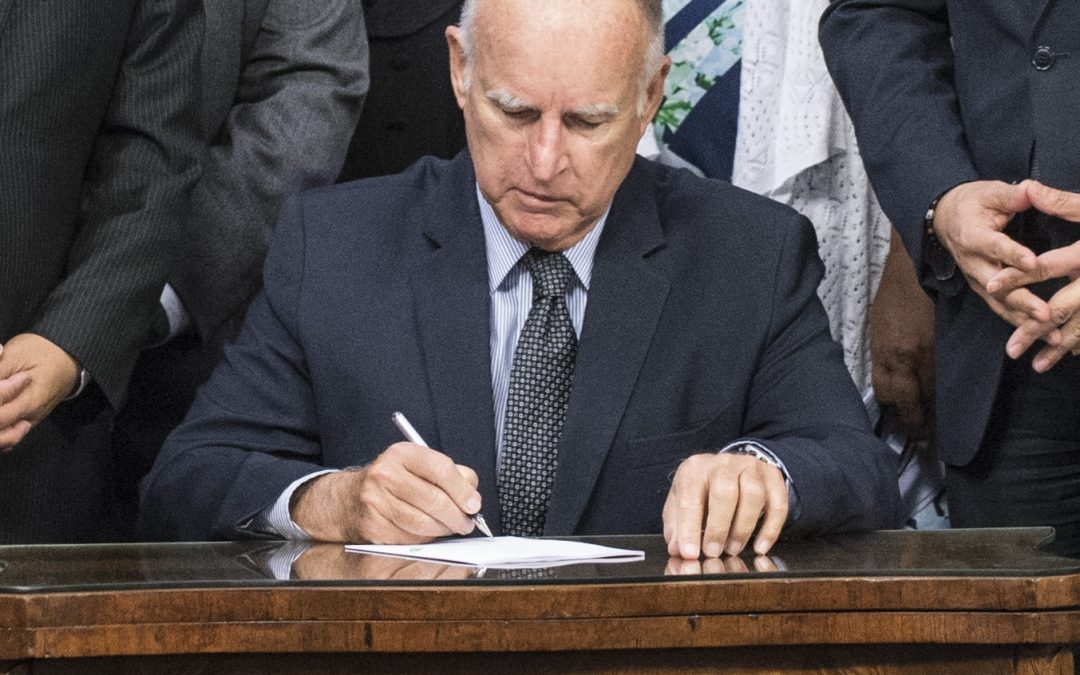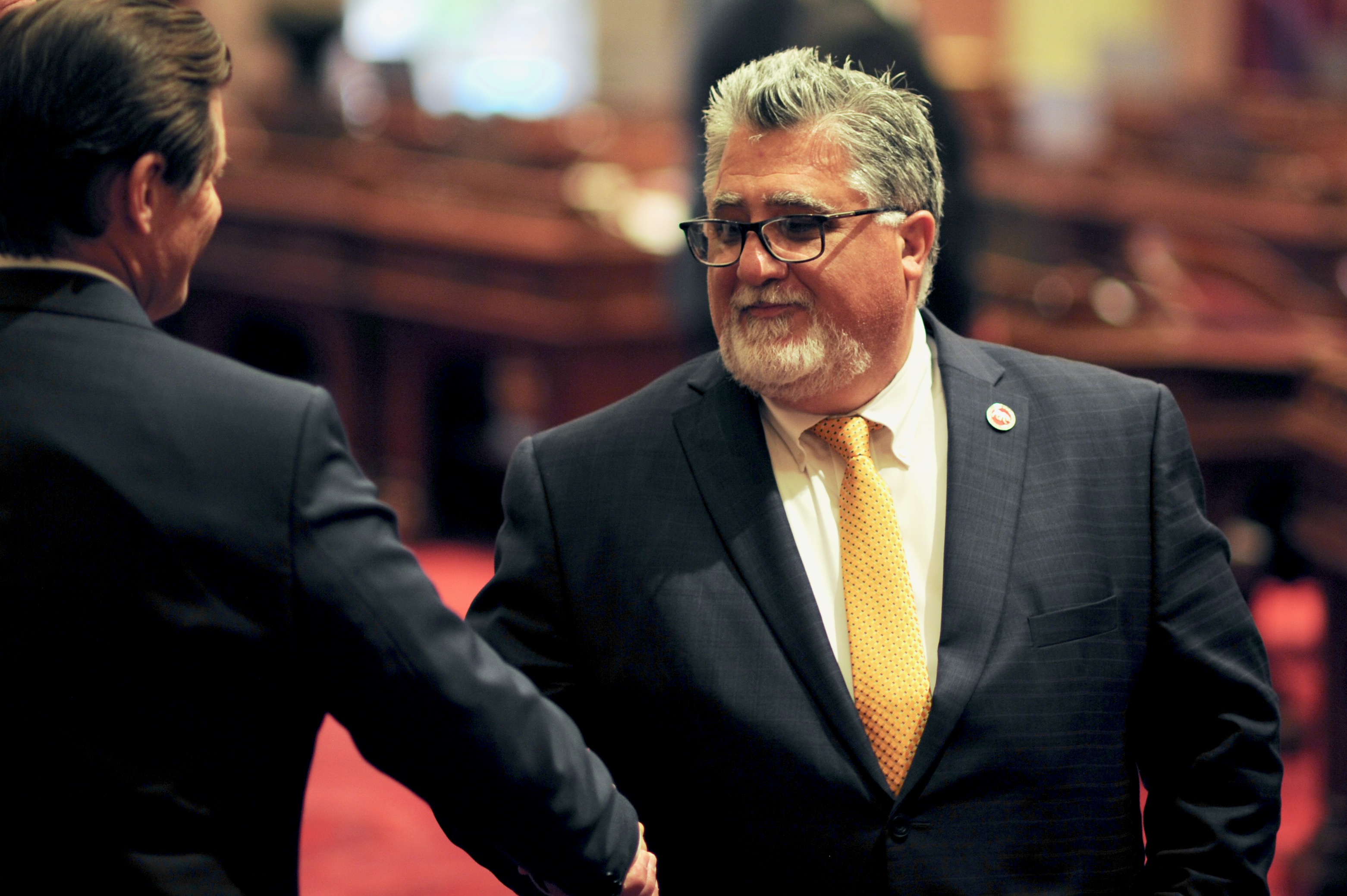
National School Choice. (Photo: schoolchoiceweek.com/)
School Choice Initiative Quietly Gathers Support
California’s voters are no longer the predictable bloc that government unions have relied on for the past 2-3 decades
By Edward Ring, January 27, 2021 2:15 am
In the November 2020 election, California’s powerful teachers’ unions spent over $20 million promoting Prop. 15, which would have increased taxes on commercial properties. Other unions, mostly in the public sector, spent another $17 million to promote Prop. 15. But voters weren’t buying it. Prop. 15 failed.
Overall, in November 2020, California’s government unions spent nearly $70 million to promote or oppose state ballot initiatives, and almost all of that spending was unsuccessful. While a couple of union supported ballot propositions were approved by voters, they weren’t high priorities, attracting only around $200,000 in union spending.
This result presents a paradox. Why is it that public sector unions, which collect and spend nearly $1.0 billion per year in revenue, mostly from dues, and use that money to make or break the political campaigns of nearly every member of the California State Legislature, and which in similar manner control nearly every city council, county board of supervisors, school board, and governing board of transit districts and fire districts and transportation districts – you get the picture – why couldn’t they impose their will on California’s electorate when it came to ballot propositions in 2020?
Consider these results on key initiatives, all contrary to the will of California’s government unions: 52 percent of voters rejected increasing property taxes, 56 percent rejected “no bail” laws, 57 percent rejected the reinstatement of racial preferences, 58 percent supported the rights of independent contractors, and 60 percent rejected rent control.
In this paradox there is opportunity. California’s voters are no longer the predictable bloc that government unions have relied on for the past 2-3 decades. To paraphrase Winston Churchill, the rebellion against union power exemplified by voter rejection of union supported ballot measures may not be the beginning of the end, but it is definitely the end of the beginning. Voters are finally waking up, fitfully shedding years of indoctrination.
And why shouldn’t they? California has it all – a diverse economy, rich natural resources, deep water ports on the Pacific Rim, the best universities, the epicenter of high tech, and the finest weather on the planet – and yet its governance is a mess. The public schools are failing, the mismanaged forests are burning up, income inequality and poverty are among the worst in America, housing is unaffordable, and the urban downtowns are overran with drug addicts and predators.
All of this can be quickly fixed by good governance. The answers for correcting these failures are not elusive, nor are they partisan. Repeal extreme environmentalist regulations that have made it impossible to construct affordable housing without subsidies. Restore laws against intoxication, petty theft, and vagrancy, and watch half the homeless population suddenly find shelter with friends and relatives. Help the rest in inexpensive supervised encampments where sobriety is a condition of entrance. Bring back the timber industry to thin the forests and create jobs. But why aren’t these fixes implemented?
The reason is equally simple: Government unions, government contractors, powerful “nonprofits,” monopolistic corporations, and big tech companies acquire power and profit by never solving these problems. And along with the insane amounts of money they deploy to manipulate public opinion and fund political campaigns, they rely on a thoroughly indoctrinated electorate to support their dysfunction – an electorate that is the product of unionized public schools.
This is a brilliant scam. Two generations of K-12 students have emerged from California’s public schools with relatively undeveloped skills in math and English, but steeped in the secular religion of class envy, pointless and bizarre race and gender theory, and a host of related maladies that can be accurately summarized as the politics of resentment, and the rejection of personal responsibility for collective victimhood.
This scam works so well because it creates a monstrous mental distraction, a mind-bending narrative that goes something like this: we are all victims of oppression by the white patriarchy, so naturally we’ll assume that our unaffordable homes, lack of good job opportunities, and burning forests are their fault. It won’t even occur to us that the people teaching us to hate the white patriarchy are the same people whose policies are truly to blame for the problems we face.
Rescue Education, Rescue California
In the galaxy called California, if government unions are the Death Star, citizen sponsored state ballot initiatives are The Force. And in Southern California, a growing group of experienced activists are using The Force to craft a ballot initiative that will strike at the heart of government union power by implementing school choice.
Moreover, unlike tepid iterations of school choice that have been unsuccessfully attempted in California in the past, or successfully approved in other states, this initiative is crafted to completely blow up the union monopoly on public schools. Proponent Michael Alexander, president of the California School Choice Foundation based in Pasadena, identified four key provisions:
1 – An Education Savings Account (ESA) would be created for every K-12 student in California.
2 – These accounts would be credited annually with each student’s pro rata share of Prop. 98 funds (40% of the California General fund). This amounts to approximately $10,000 per student per year.
3 – The parents of K-12 students will be able to direct that money to a participating school whether it’s a public, charter, or accredited private or parochial school.
4 – The money, if unspent, would accumulate to be used for college, vocational, or any other accredited educational expense.
This is a bold proposal, with a lot still to be worked out. But by taking the form of an initiative constitutional amendment, and with thorough legal vetting, it has the potential to fundamentally transform K-12 education in California. Alexander identified areas of vulnerability that the initiative, once it reaches final form, will need to address.
Popular support for an initiative that rescues public education in California will require it to eliminate some of the current state curriculum mandates. These would include inappropriate and controversial forms of sex education, poorly conceived teaching methods such as Common Core math instruction, and politicized history and social studies curricula such as the 1619 Project.
Alexander also noted the potential of accreditation to be used as a weapon against qualifying schools to receive ESA funds, explaining that the initiative would have to include language prohibiting the state legislature from changing existing accreditation criteria. He also mentioned the threat whereby abuse of due process could be used to shut down new schools set up to compete with the public school monopoly. For example, a cursory examination by a biased state official could immediately lead to a suspension of the school’s right to receive ESA funds, leaving them no ability to operate and retain students.
What makes this school choice concept attractive is its bold simplicity. Unlike more tepid solutions that infatuate the wonks, it doesn’t require “means testing” or some other exclusionary criteria. Every K-12 student is eligible. This rewards low income families that currently must take their chances in a charter lottery, where in most cases their number will not be picked, but it also rewards middle income families that struggle to pay both property taxes and tuition to a private school.
The success of charter schools, from the Alliance Network in Los Angeles, to the Orange County Classical Academy, along with countless others, illustrates how a school choice ballot measure with real teeth could dramatically improve public education in California. Because suddenly fantastic schools like these would be able to rapidly open up, everywhere, competing with the decrepit unionized monopoly system.
The plight of parochial schools which face declining enrollments as fewer families can afford the tuition is something as well that could be transformed overnight by the right school choice initiative. And recent innovations in distance learning, pod schools, and micro schools, necessitated by the COVID-19 lockdown, have taught millions of parents in California that there are preferable learning alternatives to traditional public schools, and they’re getting better all the time.
If Michael Alexander and his team intend to successfully qualify a school choice initiative for the state ballot in November 2022, they’d better not waste a minute. In only a little over a year from now they will need to have an initiative approved for circulation by the state, so they can begin collecting signatures from registered California voters. It may take several months between the time the initiative is first submitted to the state for review and when final approval is granted. That means Alexander already has less than a year, more like nine months, to navigate a complex process that starts with an idea and ends with a product that has survived multiple revisions, legal reviews, all the while earning and retaining support from donors and grassroots activists.
There is a new cultural factor at work in California that makes this effort worth while. Billions of dollars and decades of indoctrination are not having the manipulative impact they once had. California’s voters are ready for hope and change.
- Ringside: EVs and California’s Future Demand for Electricity - December 4, 2025
- Ringside: Politically Viable Water Supply Projects - November 27, 2025
- Ringside: Shifting Costs Does Not Solve California’s Electricity Shortages - November 20, 2025





The selfishness of the teachers unions and the shutdown of the schools, parents are starting to see what education has become and will start fighting back. School choice is now apparent and some are starting to like that idea!
YES, the upside of this mess is that all that had been hidden was revealed.
Comrades
The moral way is Choice…..the child is defenseless……protect and nourish….
They’re not “schools.” They’re “indoctrination camps.”
Wasn’t it Mark Twain who said it took him 20 years to unlearn his “education?”
As home school coops – either official or unofficial (“study” groups) – starting popping up in response to ill advised school ‘rona shutdowns, I was figuring this was the beginning of the end of the public school system as we’ve known it. About time. At last, a silver lining to the ‘rona clouds caused by idjit bureaucrats.
People are poised to throw off the oppression that leftists have crushed the country with for decades. In spite of appearances the left is on the precipice of their own destruction.
As much of an opportunity as this is, it will fail in the long term unless more conservatives – or at least non-progressives – are willing to become teachers. For that, we need to overhaul the compensation scheme to reward teachers for student success, not longevity.